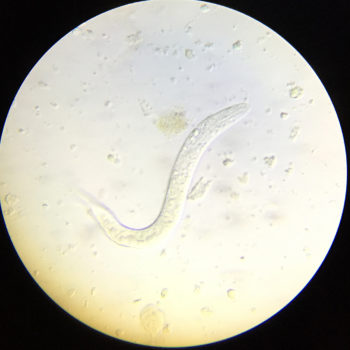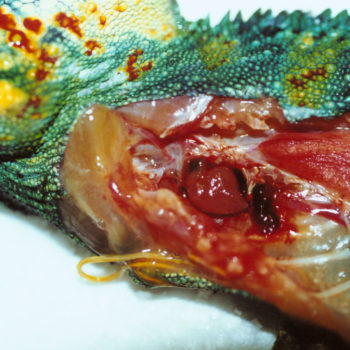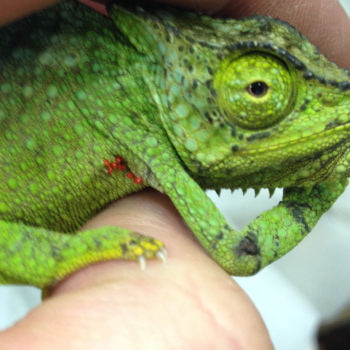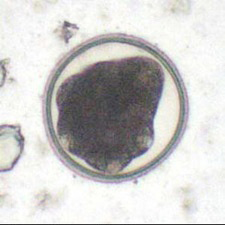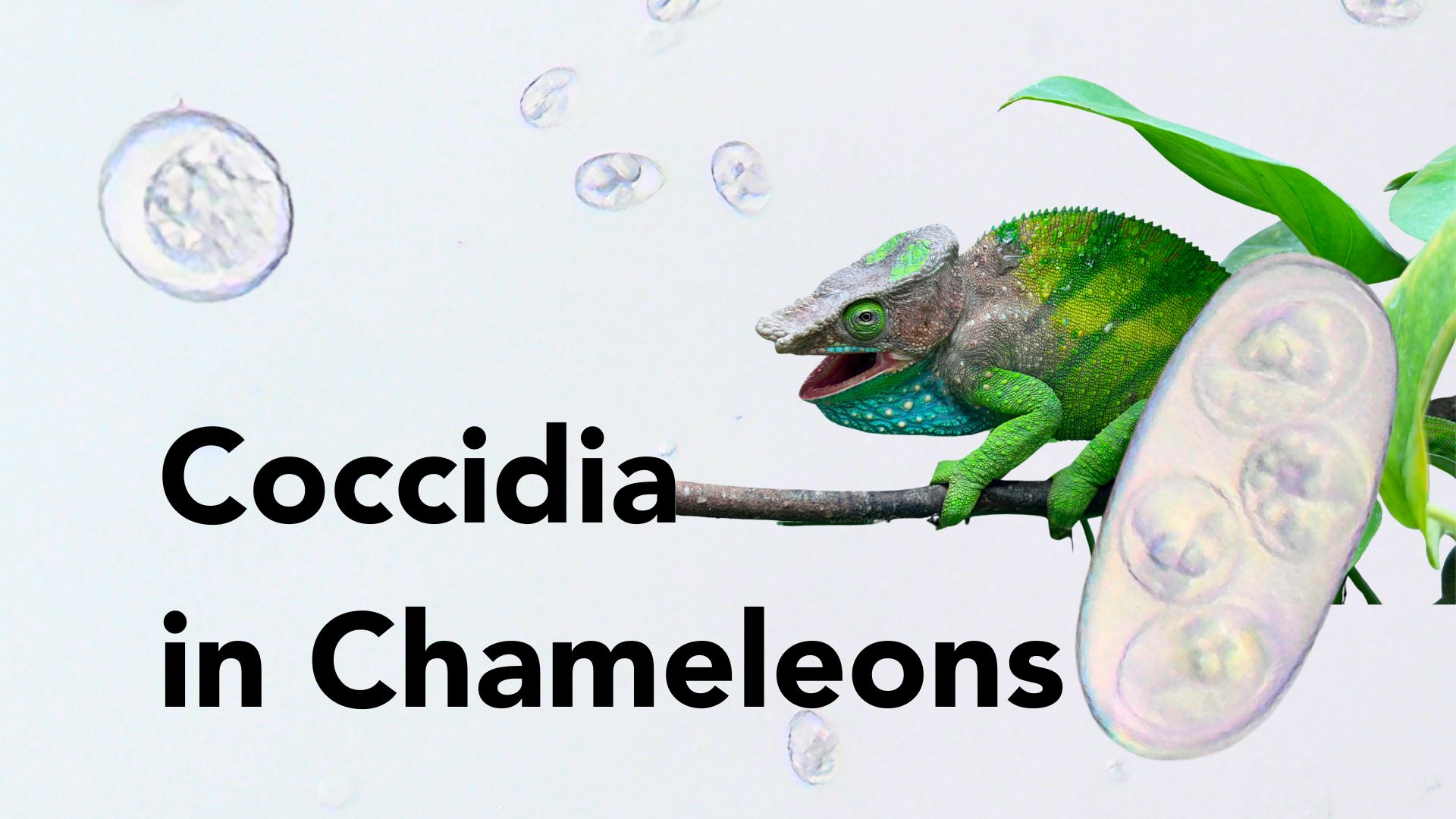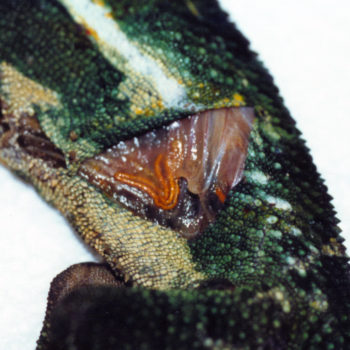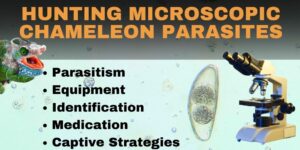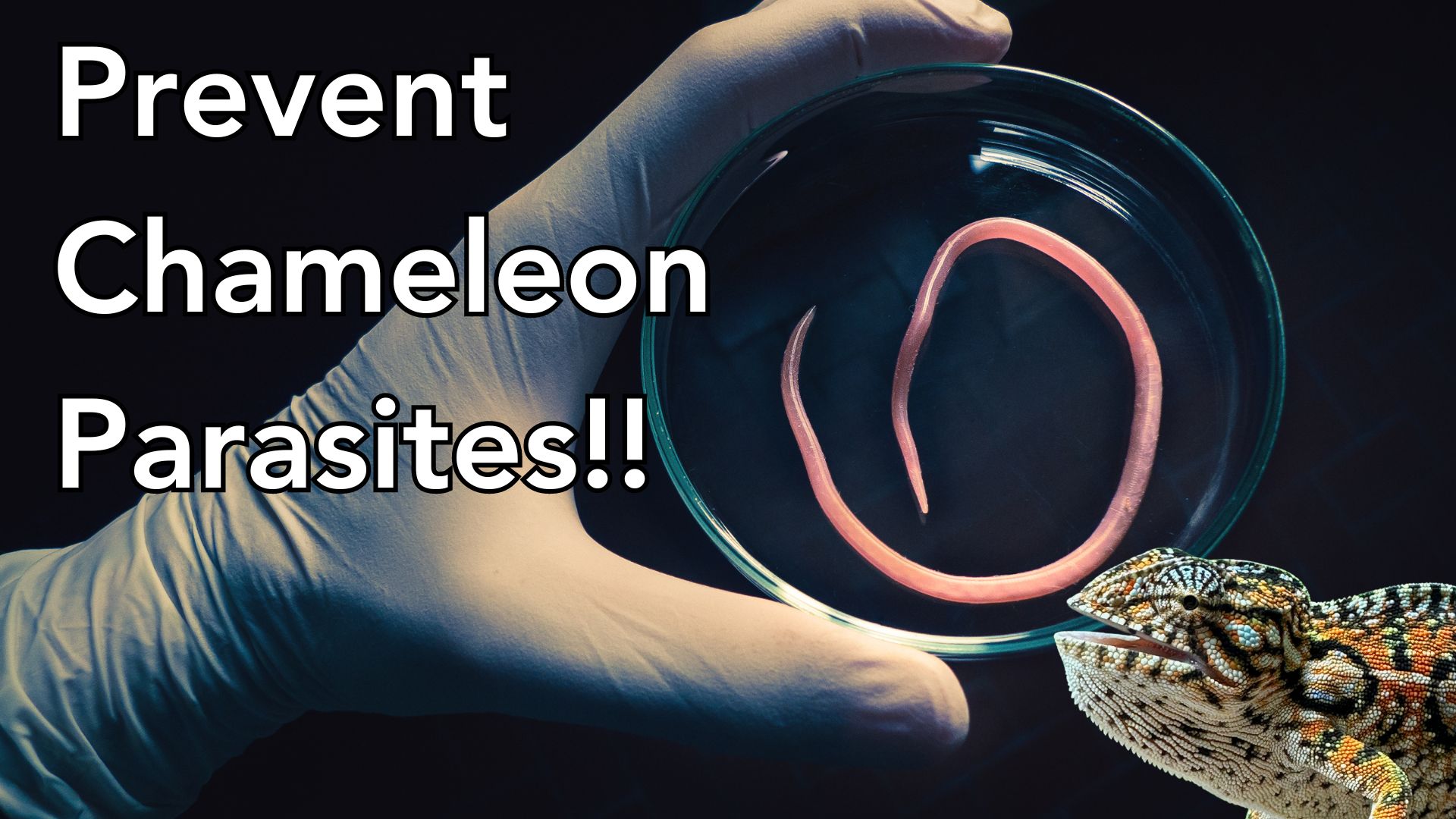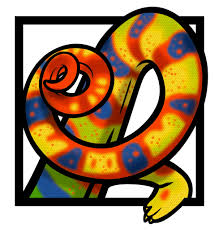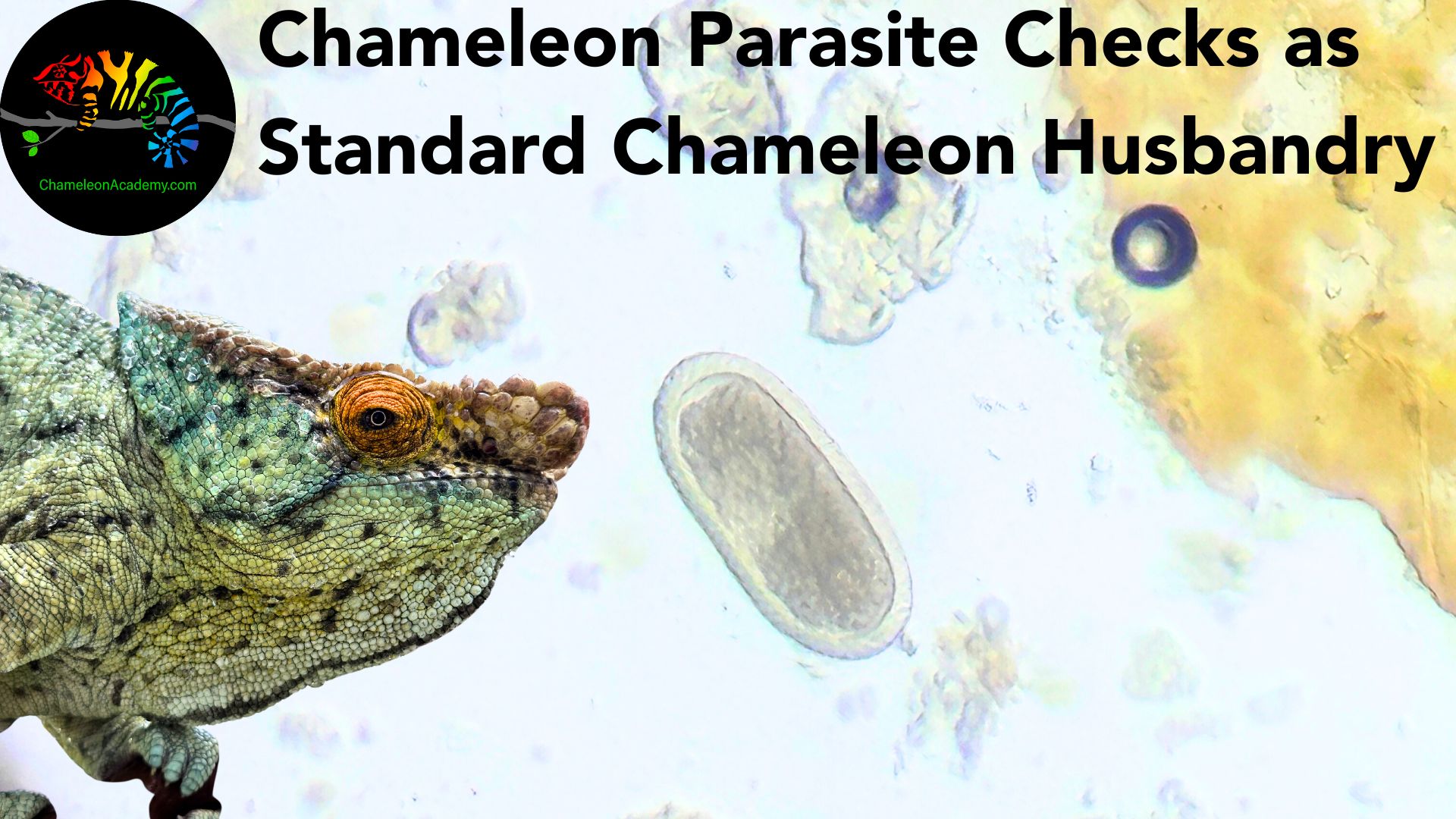Chameleon parasites are unwelcome news. This information will help you fight off parasites in your chameleon – and keep them away.
Chameleon Parasites
My Chameleon has parasites? Now what?
It is always disturbing to learn that your chameleon has parasites! The good news is that, with a little information, you can be well equipped to get your chameleon back to health. While it is true that parasites are a normal part of life in the wild, we will want to treat for the parasites to avoid them spiralling out of control. This is a multi-media introduction to parasites and will contain a wealth of information that will give you hours of study material to dive deep into this often microscopic world. But if you have just learned your chameleon has parasites you don’t want to spend hours! Thus we have a special quick introduction FAQ page to get you started. Check out that page and then come back to this main page to learn more. You will find embedded video and podcasts in the different sections that will provide yet more information.
This page for parasites is structured as such
- Quick Guide: What do I do if my chameleon has parasites?
- Introduction to Chameleon Parasites
- How do I know when my chameleon has parasites?
- Internal Parasites that infect chameleons
- Parasite Medicines used with Chameleons
- Correcting your Chameleon’s Husbandry
- Digital Course: Hunting Microscopic Chameleon Parasites
- Frequently Asked Questions about Chameleons and Parasites
An introduction to chameleon parasites
Parasites can be a serious health concern for chameleons in captivity because their population can easily spiral out of control. but, you can keep parasites under control by understanding the parasite lifecycle and blocking it at strategic points. Annual chameleon fecal tests by your veterinarian can let you know you have a problem before your chameleon gets sick. The best approach, for serious keepers, is to learn to do your own chameleon fecal checks.
Parasites can be on the outside of the chameleon, but most of the ones we are concerned about are internal parasites. If your chameleon is acting sick your veterinarian will want to do a fecal check to see if parasites could be part of the problem. Unfortunately, by the time that a chameleon is showing signs of feeling sick, the cause is well advanced and quick action is needed.
Parasites can easily be controlled with medication and prevented with simple hygienic husbandry practices. If you need a quick shot of information because you just got the news then click the link above for the 10 minute Quick Guide. Otherwise, continue on for a deeper look and understanding into parasites.
How do I know when my chameleon has parasites?
If your chameleon has internal parasites they may show symptoms like closing their eyes during the day, lethargy, diarrhea, or loose feces. You may even be able to see the shapes of parasitic worms under their skin. Strangely, though, if your husbandry is good, you may never know your chameleon has parasites until your vet tells you on a routine fecal check. This is because chameleons and parasites are designed to live in balance! The chameleon gets sick only when that balance is broken and the parasite population spirals out of control.
Unfortunately, the symptoms a chameleon may show when it is sick could be from many different sicknesses and problems so the definitive way to tell if you are dealing with a parasitic infection is to get a fecal test done by your veterinarian.
Examples of microscopic internal parasites that can infect your chameleon
Internal parasites can be found in the gut, lungs, liver, in the blood, under the skin, and in the body cavity. Depending on the species, they may make a home in any place in the chameleon’s body. Endoparasites (internal parasites) range from worms to flukes to protozoa. The study of parasites is an amazing journey into a completely different world that is right under our noses.
Some major endoparasites that affect chameleons are:
Nematodes – Nematodese are parasitic round worms such as pinworms, hookworms, whipworms, and Ascarid roundworms. They usually infect the intestines, but can also be found in the lungs, the blood, in the body cavity, or under the chameleon’s skin. Nematodes sap the host of nutrients, but can also cause impaction if they are in large numbers.
Flagellated Protozoa – Certain protozoa have a long appendage called a flagellum which they whip about to propel them through the intestinal lumen. These are easily seen on direct fecal smears. Flagellated protozoa absorb nutrients that should go to the chameleon. An overpopulation of this parasite will result in a weak chameleon.
Coccidia – Coccidia is a special type of protozoa which is exceedingly difficult to kill. They have a massive reproduction strategy and destroy intestinal epithelial cells in the process. So, not only does your chameleon lose nutrition, but also has to deal with damage to the intestinal walls. So there is even more nutrient loss. Some coccidia species will inhabit the liver and gall bladder.
Examples of internal parasites visible to the unaided human eye
There are parasitic worms which grow to the size where they are easily seen by the human eye. Some species of parasitic worms, such as Ascarid roundworms and tapeworms can migrate out of the digestive system and travel though the body cavity. It is not uncommon to see worm shapes squirming under the skin. These are known as sub-cutaneous parasites. A vet can remove these by making an incision in the skin and gently pulling them out.
Parasite Medicines used with Chameleons
Medication will kill or disrupt the parasitic lifecycle. But you must ensure that there is no reinfection of new eggs. This requires careful attention to hygiene. Parasites lay eggs which exit the body in the fece. A direct lifecycle parasite then relies upon a food item to walk by and pick up the eggs so they can get back in the mouth of the chameleon. This is why it is imperative that the floors of our chameleon cages are not substrate trays that create pools of water with poop marinating on the floor! This just invites an escaped feeder insect to walk by and pick up the eggs.
Parasites can produce thousands to 10s of thousands of eggs because the parasite expects their eggs to fall to the forest floor. The chances of a microscopic egg getting back into a chameleon in the trees is very low so it relies on volume of eggs. Putting that kind of egg production in a 2x2x4 cage greatly increases the chance of a reinfection! The following medications are commonly used for parasites:
Nematodes: Fenbendazole (Panacur), Ivermectin, Levamisole, Oxfendazole, Pyrantel Pamoate
Flagellated Protozoa: Metronidazole (Flagyl)
Coccidia: Ponazuril, Toltrazuril, Sulfadimethoxine (Albon)
Entamoeba (Amoebas): Metronidazole
Trematodes: Praziquantel (Droncit)
Cestodes (Tapeworms): Praziquantel (Droncit)
Correcting your Chameleon's Husbandry
A parasitic infection that spirals out of control does so because the immune system has been weakened. Either the load of parasite eggs was too much or else the chameleon is being stressed either physically or emotionally. The immune system must be brought back up to strength or else the the problems will just return once the medication is done.
Your way to fix things is to do a complete evaluation on your chameleon husbandry. Review your care with the basics course here on the Chameleon Academy. This will bring the immune system back to health.
Your second job is to implement an obsessive cleaning regimen where every poop is picked up quickly and the bottom of the cage disinfected with either a quaternary ammonium product (one brand name is F10) or an accelerated hydrogen peroxide product (one brand name is Rescue). Feeding time should be supervised to ensure no feeder insect gets to the bottom of the cage and if it does it is removed immediately.
When you upgrade your husbandry and hygiene you will be able to keep the parasites at bay.
Take a Digital Course on Chameleon Parasites
The Chameleon Academy offers focused instruction on the topic of chameleon parasites. The digital course “Hunting Microscopic Chameleon Parasites” takes you step-by-step through the lifecycles, testing, identification, and treatment of parasites that affect our chameleons. Tap the link below for more information!
Frequently Asked Questions about Chameleons and Parasites
Further research into chameleons and parasites
Parasites without Borders is an amazing resource to learn about parasitology. It deals with human parasites, but most of what you learn here is directly applicable to reptile parasites. You just have to keep in mind that anatomical differences between reptiles and humans will produce changes in the parasite. But the parasites are so similar that, in the case of the human parasite Entamoeba histolytica, they actually study the reptile version (Entamoeba invadens) in the lab. This website offers a free download of an amazing text at this link.
Dr, Rachel Siu is a well know exotics vet on social media under the name @exotic.pet.vet. She authored a paper on the endoparasites found at a local reptile show demonstrating the prevalence of parasites even in captive bred reptiles. This study is available for free download from Dr. Rachel’s Linktree which is linked above. Scroll down to “Reptile Parasitology Research Paper” and you will be able to read this eye-opening study.
Jonathan Hill is the breeder behind iPardalis and discovered coccidia in his breeding group. In this blog post he documents the ordeal of finding coccidia, learning about it, and working to eradicate it from his group. This is an open and honest report of a position many chameleon keepers and breeders find themselves in when they start looking under the microscope.



